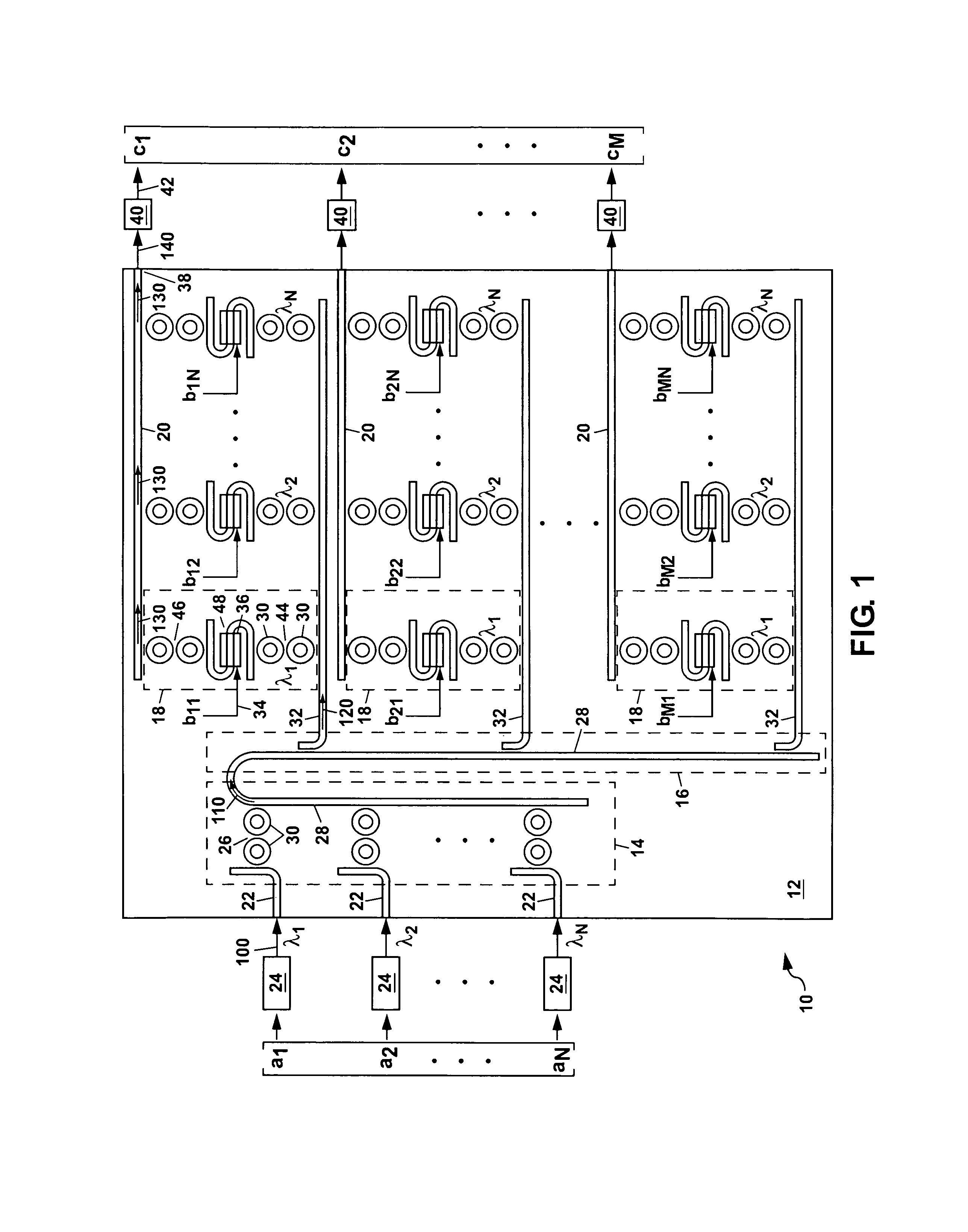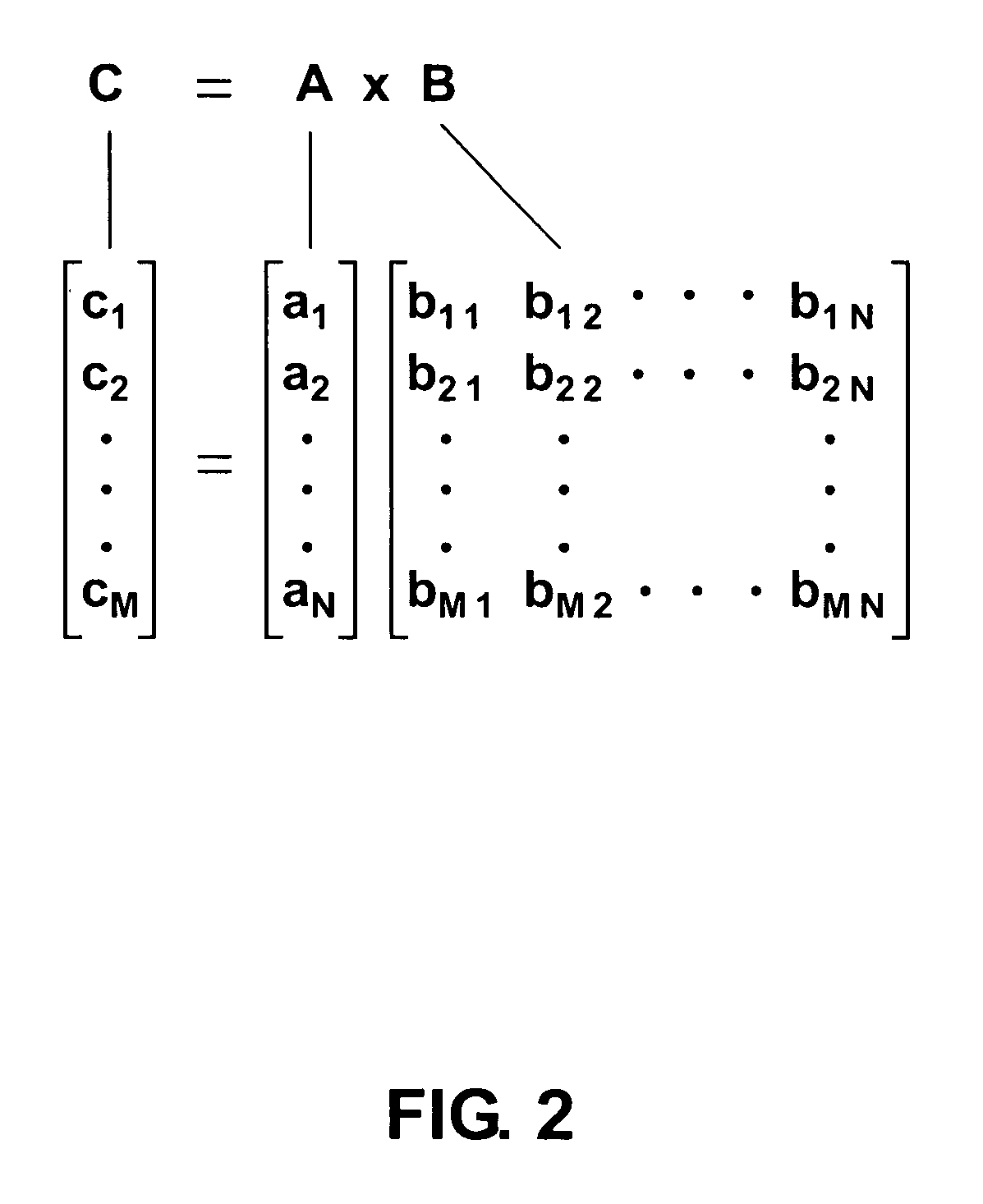Integrated optic vector-matrix multiplier
- Summary
- Abstract
- Description
- Claims
- Application Information
AI Technical Summary
Benefits of technology
Problems solved by technology
Method used
Image
Examples
Embodiment Construction
[0035]Referring to FIG. 1, there is shown a schematic plan view of a first example of a vector-matrix multiplier (VMM) 10 according to the present invention. The apparatus 10, which can be formed at least in part as an integrated optic circuit, can be used to multiply an N×1 vector A and an M×N matrix B to generate an M×1 vector-matrix product C. This can be represented mathematically as C=A×B as illustrated in FIG. 2. FIG. 2 also shows in detail the row elements ai with i=1, 2 . . . N for the N×1 vector, the column elements bji with j=1, 2 . . . M and i=1, 2 . . . N for the M×N matrix, and the resulting row elements cj given by:
[0036]cj=∑i=1Naibji
of the M×1 vector-matrix product C. Those skilled in the art will understand that the rank for the vector A and the matrix B can be arbitrary and can range from as small as one up to hundreds or even thousands or more depending upon the exact vector A and matrix B being multiplied.
[0037]Returning to FIG. 1, the first example of the appa...
PUM
 Login to View More
Login to View More Abstract
Description
Claims
Application Information
 Login to View More
Login to View More - R&D
- Intellectual Property
- Life Sciences
- Materials
- Tech Scout
- Unparalleled Data Quality
- Higher Quality Content
- 60% Fewer Hallucinations
Browse by: Latest US Patents, China's latest patents, Technical Efficacy Thesaurus, Application Domain, Technology Topic, Popular Technical Reports.
© 2025 PatSnap. All rights reserved.Legal|Privacy policy|Modern Slavery Act Transparency Statement|Sitemap|About US| Contact US: help@patsnap.com



